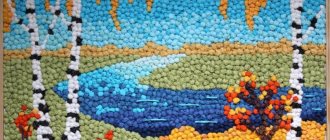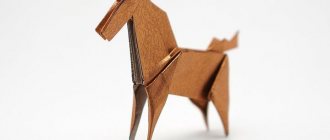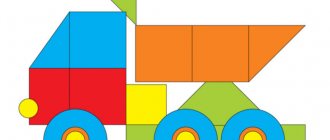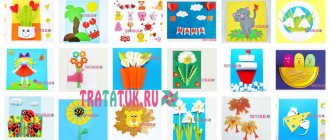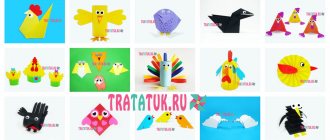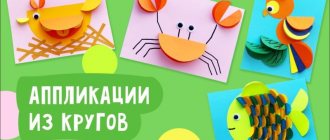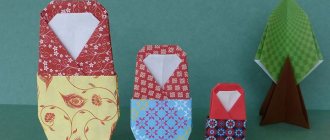The easiest material to use
Anyone interested in learning how to make simple appliques should first work with paper. It is precisely this that allows you to realize any plans without a lot of effort and money.
As you acquire the skills of drawing, cutting and gluing, you can also begin to use fabrics, leather scraps, buttons, ribbons, straps, wool, rhinestones, wood chips, and jewelry.
Color scheme and typology
As for the color design of the application, it can be monochrome, colorful, or black and white. The presence or absence of a relief in the application allows us to call it volumetric or flat.
Overhead, broken, silhouette, modular, and ribbon varieties are also known, and the typology of applique is not exhausted by these terms.
Rapid development and pleasant leisure time
There is no doubt that such stimulation of mental activity accelerates the formation of speech skills. By transferring pictures of nature, city scenes, his plans for the future and ideas about his chosen profession onto the background sheet, the preschooler receives incomparable pleasure and spends his time with great benefit.
While doing appliqué, he learns to work with cardboard and paper, read drawings, and select materials suitable for specific artistic purposes.
Compliance with safety regulations
Children's creativity is a fascinating process. But it is important to remember that in the hands of a child, scissors, glue, needle and thread, buttons and small craft items can be potentially dangerous.
Parents must show how to use all this correctly so that trouble does not happen.
Making applications is an important part of the pedagogical and educational process. By working with simple images, fine motor skills of the hands develop, spherical imagination and abstract thinking are formed.
However, when working with preschool children, it is important to ensure that the child uses scissors correctly, does not put buttons in his mouth, or tastes the glue.
Safety rules for preschoolers are taught in kindergarten. Children whose mothers and grandmothers sit at home often do not know basic things. Therefore, in the absence of adults, potentially dangerous items should be kept out of reach.
Children, wanting to repeat the creative process, may take something without permission and use familiar objects in some other way.
Making a paper basket
For the application you will need the following equipment:
- Colored cardboard or just thick paper;
- Simple pencil;
- The base can be a thick sheet of whatman paper;
- Various stencils - can be printed on a printer in advance;
- Glue - preferably used in pencil form, it is less toxic and easy to work with.
Now a little instructions, let’s learn how to do it ourselves:
- You can draw a neat basket or find a ready-made one on the Internet and print it on a regular sheet of paper.
- Next, the basket is cut out on colored paper and glued to the base.
- Next, you need to cut out circles of different sizes from colored paper.
- After this, they are wrapped around the pencil to add volume.
You need to cover the entire area of the template with similar volumetric flowers. Experts recommend using bright and variegated shades, as they are better perceived at a young age.
Handicrafts available from infancy
From about the age of one, children begin to show considerable interest in this type of creativity. It is the application that becomes the simplest and most accessible tool for developing the emerging imagination.
Beautiful types and techniques of appliques allow you to carefully study colors and shades, combine them into harmonious compositions, remember and transfer onto paper the outlines of objects, animals and people.
